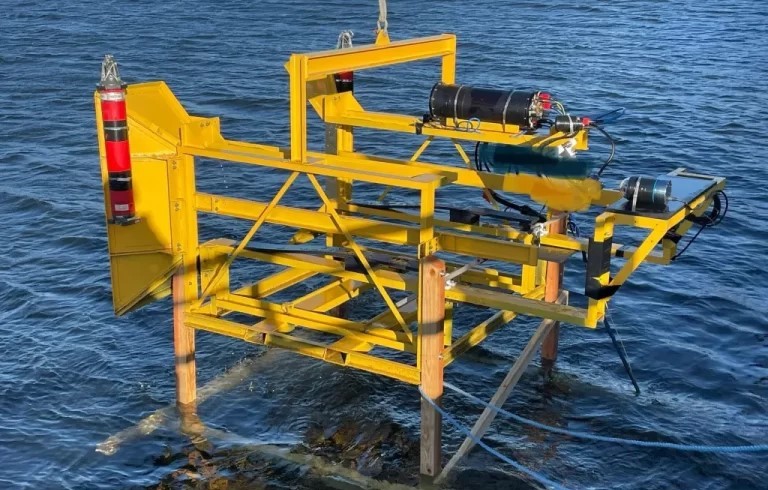
This article was republished here with permission from Great Lakes Echo.
By Georgia Hill, Great Lakes Echo
As climate change increasingly shapes the Great Lakes region’s ecology and economy, scientists plan to use underwater robots to gather previously inaccessible data they say will help communities adapt.
The National Oceanic and Atmospheric Administration announced in September that its Great Lakes Environmental Research Laboratory received $1.9 million through the federal Bipartisan Infrastructure Law.
It’s one of three NOAA labs that received $6.7 million in total for ocean and Great Lakes observing systems, according to the U.S. Department of Commerce, which includes the agency.
In a press release, Commerce Secretary Gina Raimondo said the funding “will help NOAA improve and expand climate and weather services so that communities are better prepared to tackle the impacts of climate change.”
A portion of the funding will allow GLERL and partners to deploy autonomous underwater vessels to monitor more of the Great Lakes ecosystem during a greater portion of the year than earlier technology allowed. The funding will also augment long-term tracking of water temperatures by increasing the number of moored heat sensors in the lakes. Together the technologies will allow scientists to gather data when the lakes are frozen over, according to NOAA.
That’s crucial for adapting to climate-driven changes in the lakes because their temperature influences the growth of toxic algae blooms, the health of fisheries and even local precipitation patterns, said Craig Stow, a GLERL scientist and one of the project’s lead researchers. “Water temperature affects everything,” Stow said.
The new project will grow the network of sensors that GLERL has used to monitor Great Lakes water temperatures for three decades.
“With these autonomous vehicles, we can compare longstanding data with a larger spatial area, particularly under the ice during winter, which is something we’ve never really been able to do before,” said Steve Ruberg, who leads NOAA’s Observing Systems and Advanced Technology branch and is the other primary researcher on the project.
Other technology for collecting data in the Great Lakes was not designed to withstand winter temperatures and has to be hauled out each fall to prevent damage, Ruberg said. That has created a gap in field data from the winter. Using autonomous vehicles, researchers will be able to collect data under the lake ice to help close that gap.
The new robots can rove far, wide and deep in the lakes, following either pre-programmed instructions or input from operators who tell them where and what to sample. Using the vessels’ internal navigation system and acoustic beacons, scientists can keep track of their movements and pinpoint their location even at great depths. The robots can also autonomously dock at charging stations to recharge their batteries.
“The autonomous vehicles are great because you’re not just getting the observations in one location, you’re getting them from all over,” Ruberg said.
Along with temperature, the vehicles will track water quality and chlorophyll levels, which indicate what’s happening at the base of the food web, with implications for fish populations.
“Understanding how the temperature of the water is changing through time is extremely informative to folks that manage these fisheries, and everyone who depends on them for jobs and livelihoods,” said Greg Dick, director of the Cooperative Institute for Great Lakes Research. The institute and Woods Hole Oceanographic Institution are providing the new vessels.
The data NOAA provides can help commercial fishers adapt to changing conditions, Dick said. Better temperature data also can help communities become more resilient to climate change. And cities that rely on the lakes for drinking water can use the data to ensure the safety and well-being of their communities, he said.
Information the project gathers will be available to the public on GLERL’s website and other platforms, such as the Great Lakes Observing System, which provides real-time data for boaters and anglers.
Catch more news at Great Lakes Now:
Students at Michigan State and Wisconsin win EPA funding for environmental health innovations
Wisconsin officials ask the public to report algal blooms in Lake Superior
Featured image: Autonomous vehicle docking stations allow the robots to recharge their batteries without human assistance. Credit: NOAA




